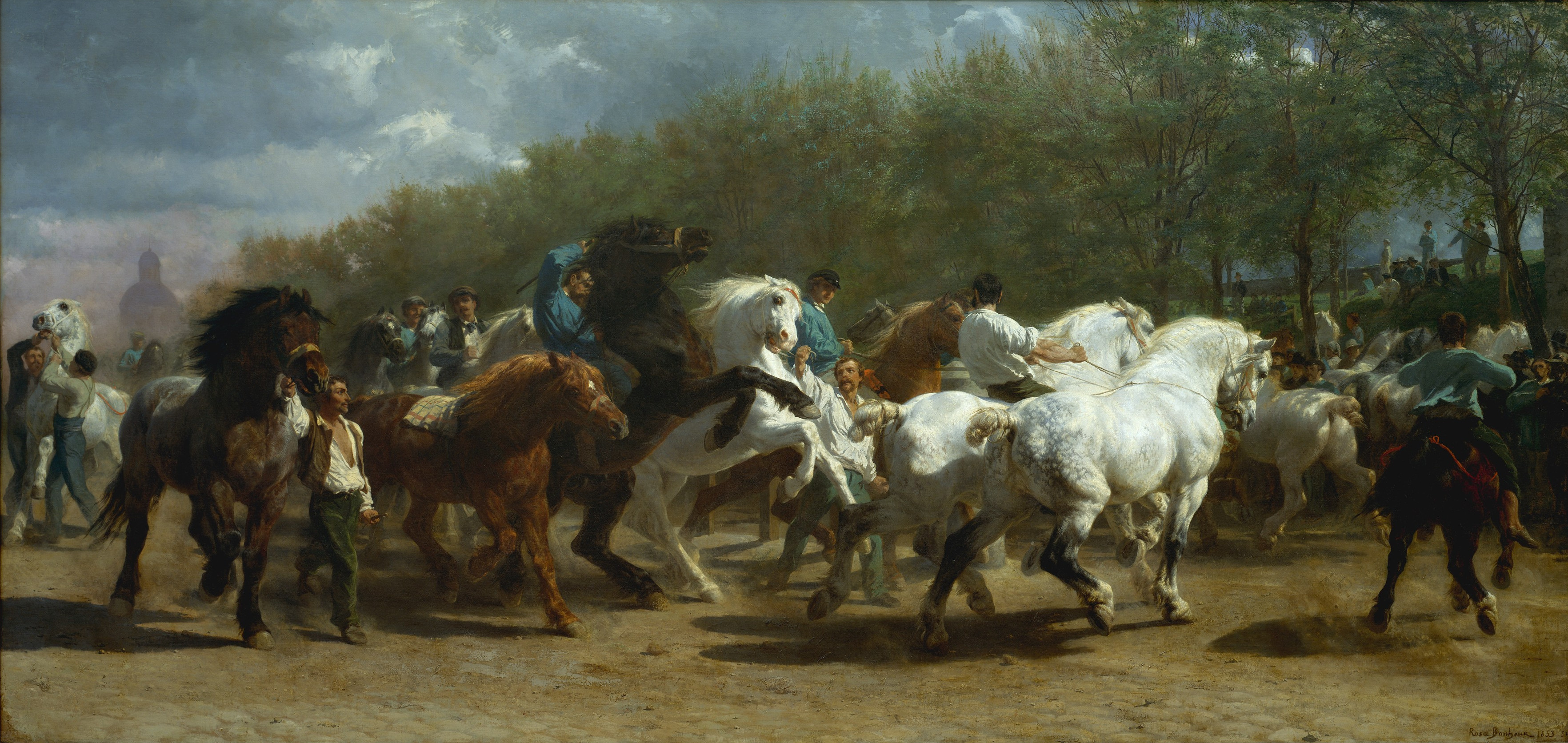Difference between revisions of "Warhorse"
Tao alexis (talk | contribs) |
Tao alexis (talk | contribs) |
||
| Line 55: | Line 55: | ||
Extensive knowledge about horses is available through '''[[Horseback Riding (sage study)|horseback riding]]'''. Management of warhorses includes teaching the rider how to '''[[Horse Handling I (sage ability)|handle the warhorse]]''' and use it to '''[[Horse-mounted Combat I (sage ability)|engage in combat]]''' — including the use of a [[Bow (weapon)|bow]] from horseback. '''[[Warhorse Training (sage ability)|Warhorse training]]''' enables characters to give basic training to young horses, raising them to be warhorses. | Extensive knowledge about horses is available through '''[[Horseback Riding (sage study)|horseback riding]]'''. Management of warhorses includes teaching the rider how to '''[[Horse Handling I (sage ability)|handle the warhorse]]''' and use it to '''[[Horse-mounted Combat I (sage ability)|engage in combat]]''' — including the use of a [[Bow (weapon)|bow]] from horseback. '''[[Warhorse Training (sage ability)|Warhorse training]]''' enables characters to give basic training to young horses, raising them to be warhorses. | ||
| − | [[File:Heavy Warhorse.jpg| | + | [[File:Heavy Warhorse.jpg|right|490px|thumb]] |
See [[Bestiary]] | See [[Bestiary]] | ||
Revision as of 22:13, 22 December 2021
| Type | Light | Medium | Heavy |
| Species | hoofed mammal | ||
| No. Appearing | 1 | 1 | 1 |
| Behaviour | domesticated | ||
| Range | rural, urban | ||
| Size at the withers |
14-16 hands | 15-17 hands | 16-18 hands |
| Weight | 1,000-1,300 lbs. | 1,300-1,700 lbs. | 1,700-2,000 lbs. |
| Intelligence | 2 | 2 | 2 |
| Armour Class | 7 | 7 | 7 |
| Hit Dice | 2+2 | 3+3 | 4+4 |
| Action Points | 6 | 6 | 5 |
| Max. Stride | 17 | 16 | 14 |
| THAC0 | 20 | 19 | 18 |
| Hp/Die | d4+d6 or d12 |
d12 | d12 or 2d6 |
| Attack Form | front hooves & bite | ||
| Damage | 1-6/1-6 & 1-3 |
1-8/1-6 & 1-3 |
1-8/1-8 & 1-4 |
| Special Attack | back kick | ||
Warhorses are working animals bred to take part in war, bearing combatants and having characteristics that enable their use in cavalry tactics. Originally bred for chariots, many centuries of breeding has produced many hardy, strongly muscled varieties, raised in all parts of the world. When breeding such animals, the balance and agility of the horse is crucial.,
Riders handle a horse through the bridle and stirrups, both of which are unavailable to primitive tribal regions; in fact, the horse itself requires a minimum of civilisation to exist. Warhorses are trained to respond fluidly to the rider's intentions, requiring limited use of the reins, relying upon the rider's thighs and voice for guidance. This frees the rider's hands more completely for fighting. In battle, the horse is largely unafraid, and is able to counterbalance the rider striking with weapons.
Additionally, these horses are accustomed to the use of barding and other tack, unlike a common horse that would bolt if subjected to such equipment. Carrying a rider laden with heavy armour is done without complaint.
The origins of the discipline of dressage comes from the need to train warhorses to be obedient and manoeuvrable. The horse was trained to rear at the moment of obtaining initiative, so that the rider could use the horse to strike with its front hooves in combat. Horses were also given free rein to bite, so that the rider and horse could act as combatants together.
Types
Light warhorses are favoured for speed, endurance and agility, which is best for raiding, moving through dense growth or scouting the location of the enemy. These horses tend to be long-legged, slim in build and more physically refined; they also tend to be more "hot blooded" than larger horses, allowing them to be athletic, versatile and to learn quickly. Their pedigree rose out of western Asia, where they were adapted to hot, dry climates. Desert warhorses are rarely anything but light. Well known breeds are barb, Turkomen, Arabian and Andalusian.
Medium warhorses are stronger, capable of holding a third full-grown human rider if needed, and to carry riders with scale mail or heavier armour. They are generally quite agile in combat, but do not possess the raw speed and endurance of a lighter horse. Breeds became known as destriers, the most prized, coursers and rounceys. Generally, these three types of horse were referred to as chargers. They are usually stallions, with powerful hindquarters, with a short back and well-muscled loin, strong bone and a well-arched neck.
Heavy warhorses, or "great horses," are used by the heaviest-armoured knights, generally those wearing plate mail or plate armour. These were surprisingly agile for their size and physically able to press the weight of the cavalry in battle. Chests are wide and deep, with the croup long and level. The feet and legs are clean and heavily muscled. They are considered easy keepers and adapt well to many conditions and climates. Breeds include the Percheron and Boulonnais.
Sage Study & Abilities
Extensive knowledge about horses is available through horseback riding. Management of warhorses includes teaching the rider how to handle the warhorse and use it to engage in combat — including the use of a bow from horseback. Warhorse training enables characters to give basic training to young horses, raising them to be warhorses.
See Bestiary

